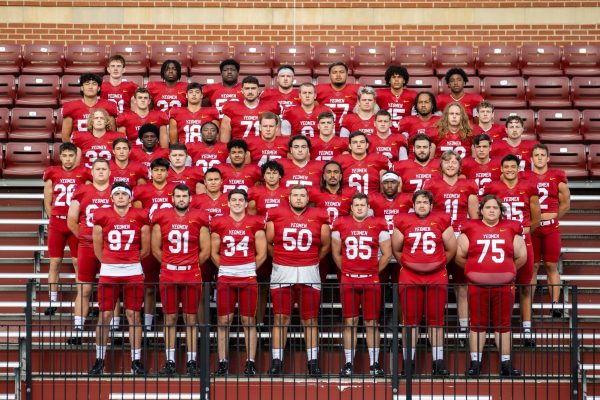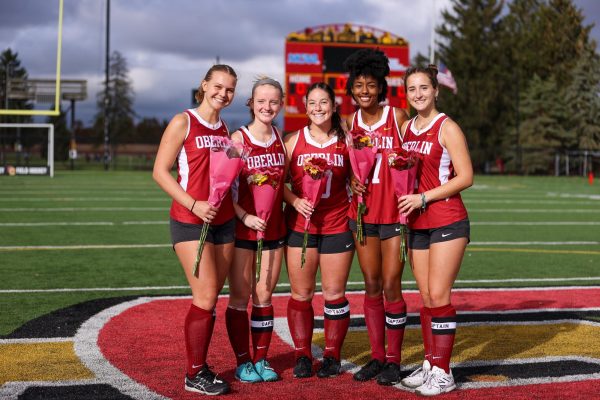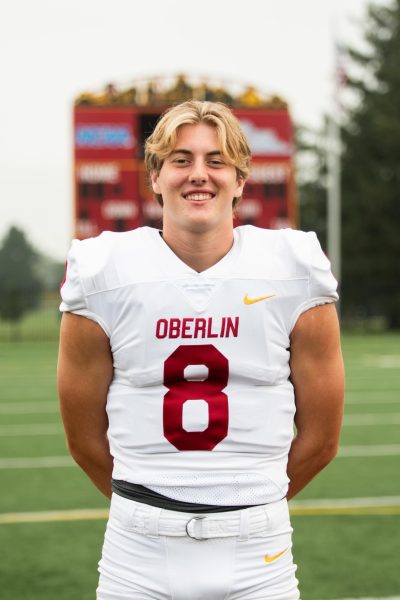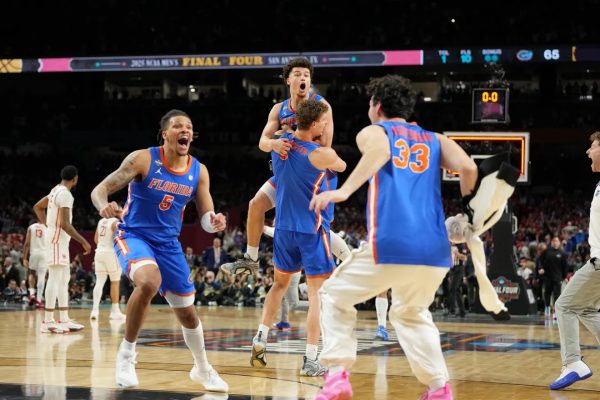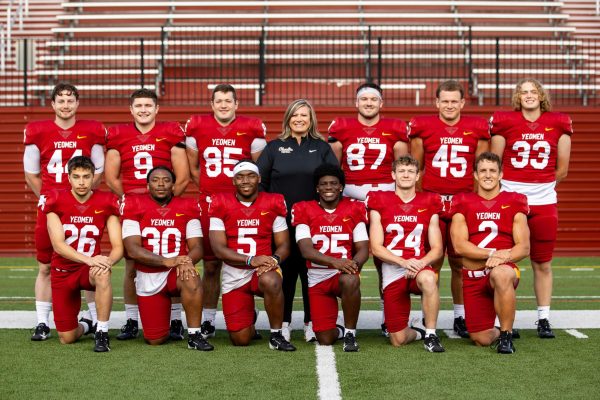Flashback to the John Heisman Era
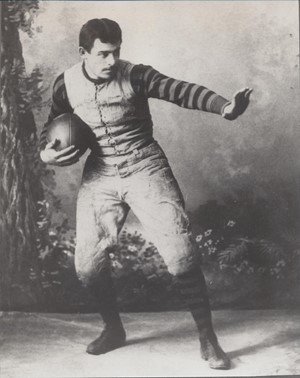
John Heisman poses in his iconic stance back in the day.
Without the contributions of professional and college football programs in Ohio, the game would look much different than it does today. Around the turn of the 20th century, Oberlin College football helped shape the sport into what it is now, and its innovative role was sparked by one of the game’s most famous names.
One of the most coveted awards in all of American sports, the Heisman Memorial Trophy, is awarded to the most outstanding player in NCAA football every year. The award is known to all college football fans, but few people know about the trophy’s namesake, John Heisman, and his coaching start at Oberlin.
In 1892, the second football season in Oberlin’s history, 22-year-old Heisman took control of the team, instantly transforming the program. After Oberlin routed Ohio State University 40–0 in its first game under Heisman, the Review wrote that the team’s work was “far more systematic, more scientific, than last year.” The squad went on undefeated that year, going 7–0, including a controversial victory over the University of Michigan in Ann Arbor.
While coaching at Oberlin, Heisman’s success was largely due to his ability to innovate and create new strategies. He implemented plays that would catch the opponent off guard, and he was largely credited with popularizing the use of offensive guards to block for the running backs.
In When Oberlin Was King of the Gridiron: The Heisman Years, author Nat Brandt describes how Heisman introduced the “double pass” at Oberlin — a trick play where the quarterback throws a lateral to a receiver, who then throws a forward pass. This play is seen often in football today, including in the NFL.
After the 1892 season, Heisman left Oberlin to coach football and baseball for a year at Buchtel College — now the University of Akron — but came back to coach the Yeomen again in 1894. The team had another winning season that year, but Heisman left Oberlin for good the following season. He continued to innovate the game at several schools, including Auburn University, Clemson University, and Georgia Tech University.
While the Heisman era of Oberlin football history has certainly had an impact on the football world, it may also be representative of what Oberlin has done as an institution over the years.
Oberlin Chemistry Laboratory Instructor Rob Thompson is a lifelong football fan who started attending Oberlin football games in the 1980s as a way to support his students on the team. He spoke about how the early history of Oberlin football contributes to the school’s overall identity.
“The history is important because it’s another example of how Oberlin has been an innovator and starter of many things,” Thompson said. “We were right there in the beginning with getting college football established.”
Thompson also believes Oberlin helped set up Heisman to do great things after he left to coach elsewhere.
“In terms of Heisman, his story is a reminder of how Oberlin continues to bring in students, faculty, and coaches, and get them started on wonderful careers,” Thompson said.
Oberlin Emeritus Archivist and Professor of History Roland Baumann believes it is important to recognize how the rise of the football team under Heisman played a role in the school’s introduction of athletic and physical education programs.
“The birth of the [football] movement at Oberlin ultimately led to physical education training and to team sports with competition,” Baumann said.
Baumann also noted the role that the women of the student body played in promoting the introduction of competitive sports and physical education.
In addition to his success in football, Heisman was also a theatre enthusiast and often acted during the football offseason, once performing on Broadway. Oberlin football and lacrosse letter-winner and 2018 John W. Heisman Club Hall of Honor inductee Andy Zvara, OC ‘63, believes Heisman’s combined interests are strongly representative of how Oberlin cultivates a range of talents and career paths.
“That’s very Oberlin-like isn’t it? A guy involved in both theatre and athletics,” Zvara said. “There’s a mix of personalities and talents that blend in [the Oberlin] atmosphere.”



